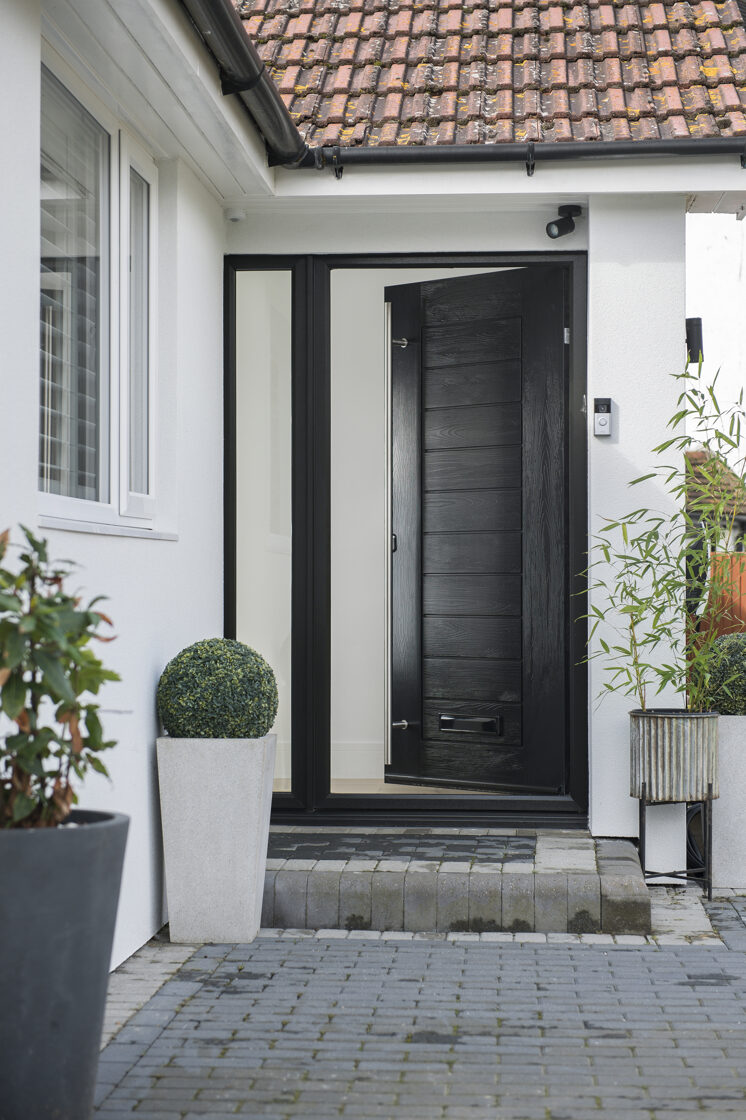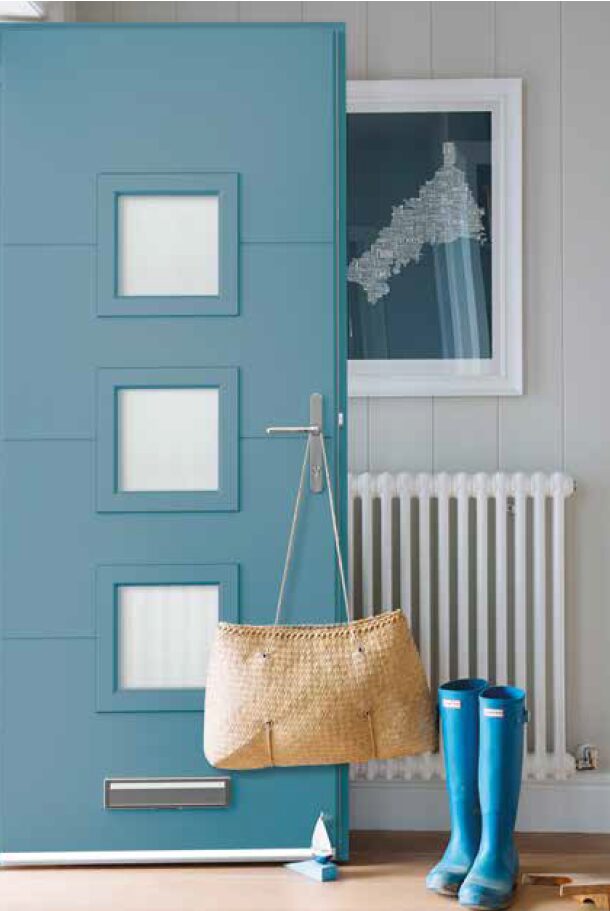A guide to buying your new entrance door
Introduction
Buying a door: it’s not something you do every day. It sounds simple enough but, when you think about it, there’s a lot riding on your choice. Your exterior doors can have a big influence on the security, energy efficiency, look, and even the value of your house. In short, the right door can make your home into a safer, more comfortable place to be
Like any significant purchase, buying an exterior door can be a minefield: with jargon, technical terminology and a whole array of options to get to grips with. That’s why we’ve created this exterior door buying guide. If you choose well, your door could be with you for years to come, so we think it’s important to demystify the entire process and make it easier to arrive at the best option for you
Materials, types, colours, glazing options, security, fixtures and fittings; all of it can have an impact. This guide will give you everything you need to get it right, from starting your research, all the way through to admiring your smart new entrance
Different External Door Materials
One of the first things you’ll need to decide on is what your door is made of. Lots of materials meet the basic requirements for a solid, nice-looking entrance but, they all come with their own benefits and drawbacks, and some will be better suited to your needs than others
Read on for an introduction to the main materials, and get an understanding of what to expect from each one
Composite Doors

As the name suggests, composite doors are made from a combination of materials. Generally, this will include some or all of the following: wood, uPVC, insulating foam, and GRP (Glass Reinforced Plastic). The key features of composite doors are their superior strength, durability and security
Their unique make-up allows them to benefit from the positive characteristics of multiple different materials, which makes them sturdier and more weather-resistant than single-material doors. Composite doors’ construction includes an insulating foam core, which also gives them excellent thermal efficiency
Multi-point locks, which have bolts at multiple points along the door edge, are standard for composite doors, which adds considerably to their levels of security
Composite doors can accommodate a massive range of finishes and they’re much less vulnerable to damage and warping than wood. They can go on for decades looking just as good as the day they were installed
Overall, composite doors represent the best option for security, energy-efficiency, curb appeal and value for money
PVC Doors
PVC (Unplasticised Polyvinyl Chloride) doors are a popular choice due to their affordability, durability, and relative lack of maintenance. In basic terms, uPVC, a robust kind of plastic, is resistant to rotting, rusting, and fading, which is ideal for UK weather
They are lighter than wooden, metal or composite doors, which means slightly less wear-and-tear on the hinges
Compared to a composite, uPVC doors have a slightly shorter lifespan and, although they are almost always fitted with multi-point locking, the lack of reinforcement makes them slightly less secure than a composite
Aluminium Doors

Like uPVC and composites, aluminium doors are highly durable and can last for decades without warping, cracking or rusting. They’re easy to clean and don’t need much upkeep. Because of their inherent strength, aluminium doors can accommodate thinner frames and larger areas of glass. This creates naturally lit interiors and adds to the visual appeal of the exterior
Aluminium doors are typically more expensive than uPVC, and can rival the cost of composite doors. However, aluminium is a poor insulator meaning aluminium doors can’t match the insulation levels of composite doors in spite of recent technical advances improving their energy efficiency
They come in a wide range of finishes, colours and styles, which can be ideal for more modern or minimalist designs. Ultimately, it comes down to personal taste and the effect you want to achieve. The sleek, industrial look of aluminium doesn’t deliver the warmth and texture of wood or composite materials, and while they perform better than they used to, aluminium doors are less insulating than composites and most wood doors
Timber Doors
Wooden doors are known for their traditional associations, natural warmth, and the ageless charm they can add to any home. Solid wood doors are commonly made of oak, pine, mahogany or engineered wood, which can be treated for durability and longevity
It offers reasonable thermal and acoustic insulation. The natural grain and texture provide an authentic appearance that can be easily painted or stained and it’s fairly easy to personalise to your design. When sourced responsibly, wood can be an eco-friendly choice, it’s also biodegradable and can be recycled (although that will depend on the paint or finish you choose)
How much does a new door cost?
There are many different types of door out there. However, as we have discovered, they're not all made equal. And in each option, there are lots of different colours, styles, glazing and hardware choices which all change the price
However, to give you a heads-up we've put together our Typical Pricing Guide
